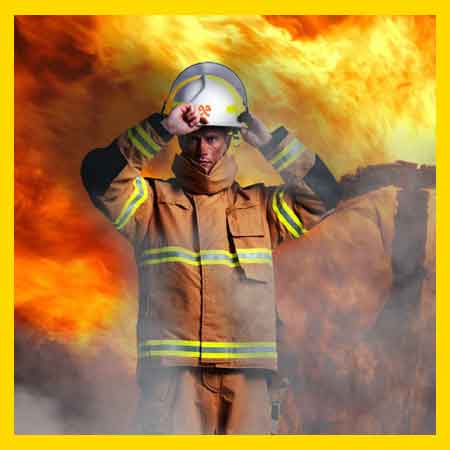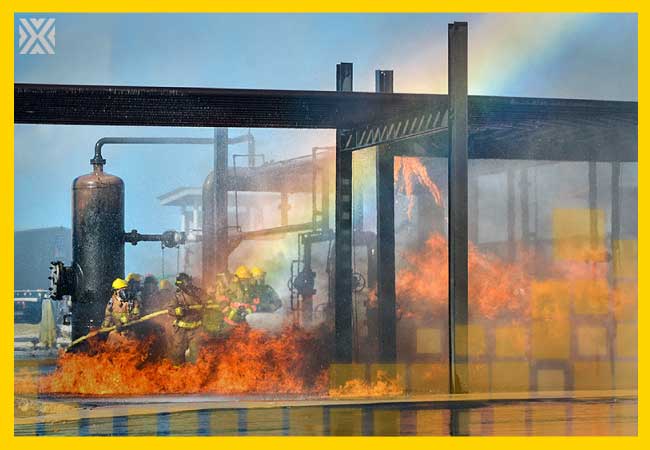Currency
January 17, 2019

NFPA 2113: Standard on Flame-Resistant Garments for Protection of Industrial Personnel Against Flash Fire (latest edition 2015, next revision 2020) guides you to avoid risks associated with incorrect selection, use, and maintenance, as well as contamination and damage of flame-resistant (FR) garments. The standard specifies FR garments that are compliant with NFPA 2112:.

This widely used standard is essential for any company or facility that handles or processes flammable gas, flammable or combustible liquids, or combustible dust that may accumulate and/or deflagrate, exposing personnel to short duration thermal exposures from fire.
A flash fire occurs when concentrated fuels become mixed with enough oxygen to cause combustion, which results in a sudden, unexpected ignition. Flash fires usually last for a relatively short period of time—less than three seconds—but may cause severe burns to exposed skin.
Electric arcs pose some of the most serious safety hazards for electric power industry workers. Arc blast or flash hazards include high temperatures (hotter than the surface temperature of the sun) over short periods of time (fractions of a second), hot gases, an intense pressure wave from the explosion (like having a hand grenade explode inches away), and shrapnel from vaporized and molten metal particles. Arc-related injuries can range from minor to severe burns, blindness, hearing and memory loss from the pressure wave, broken bones, or death.
Knowing the duration of a fire is usually important in understanding potential damage to infrastructure and fire escalation factors. But for the selection of PPE it is the duration of the potential thermal exposure a person might experience during escape that’s important. This is normally determined through a site and task hazard analysis. Several tools can assist in this process. The Center for Chemical Process Safety (CCPS) of the American Institute of Chemical Engineers and the NFPA 2113 standard have been recognized by OSHA as guides to assist in this process and to select the appropriate thermal protective PPE.
In NFPA 2113, the first step in the selection process is to conduct a thorough hazard assessment to establish the need for FR clothing.
Next, investigate the types of FR clothing designs available to determine which type will offer workers the best protection against the risks identified in your hazard analysis.
Use the results of these two steps to develop specs to guide the selection and purchase of appropriate FR clothing for your workforce.
Once FR clothing has been purchased and distributed to employees, they need training in the proper use, care, and maintenance of the garments to ensure they provide full protection. Training includes:
Wearing the garments properly to ensure full coverage;
How to launder the garments to preserve their FR properties;
Instructions for repairing damaged garments;
How to know when a garment can’t be repaired and needs to be retired from use.
Manufacturers and suppliers of FR clothing provide much information through garment labeling and additional materials. NFPA 2013 provides further, specific guidance on what information and training you need to provide to your employees.
Regular checks of PPE are mandatory. Implement a brief visual inspection of FR clothing as a standard of job briefings. A visual check for excessive soil, wear-and-tear, holes and/or stains can be accomplished quickly.

This widely used standard is essential for any company or facility that handles or processes flammable gas, flammable or combustible liquids, or combustible dust that may accumulate and/or deflagrate, exposing personnel to short duration thermal exposures from fire.
Hazards addressed
A flash fire occurs when concentrated fuels become mixed with enough oxygen to cause combustion, which results in a sudden, unexpected ignition. Flash fires usually last for a relatively short period of time—less than three seconds—but may cause severe burns to exposed skin.
Electric arcs pose some of the most serious safety hazards for electric power industry workers. Arc blast or flash hazards include high temperatures (hotter than the surface temperature of the sun) over short periods of time (fractions of a second), hot gases, an intense pressure wave from the explosion (like having a hand grenade explode inches away), and shrapnel from vaporized and molten metal particles. Arc-related injuries can range from minor to severe burns, blindness, hearing and memory loss from the pressure wave, broken bones, or death.
Best practices
Knowing the duration of a fire is usually important in understanding potential damage to infrastructure and fire escalation factors. But for the selection of PPE it is the duration of the potential thermal exposure a person might experience during escape that’s important. This is normally determined through a site and task hazard analysis. Several tools can assist in this process. The Center for Chemical Process Safety (CCPS) of the American Institute of Chemical Engineers and the NFPA 2113 standard have been recognized by OSHA as guides to assist in this process and to select the appropriate thermal protective PPE.
In NFPA 2113, the first step in the selection process is to conduct a thorough hazard assessment to establish the need for FR clothing.
Next, investigate the types of FR clothing designs available to determine which type will offer workers the best protection against the risks identified in your hazard analysis.
Use the results of these two steps to develop specs to guide the selection and purchase of appropriate FR clothing for your workforce.
Once FR clothing has been purchased and distributed to employees, they need training in the proper use, care, and maintenance of the garments to ensure they provide full protection. Training includes:
Manufacturers and suppliers of FR clothing provide much information through garment labeling and additional materials. NFPA 2013 provides further, specific guidance on what information and training you need to provide to your employees.
Regular checks of PPE are mandatory. Implement a brief visual inspection of FR clothing as a standard of job briefings. A visual check for excessive soil, wear-and-tear, holes and/or stains can be accomplished quickly.









